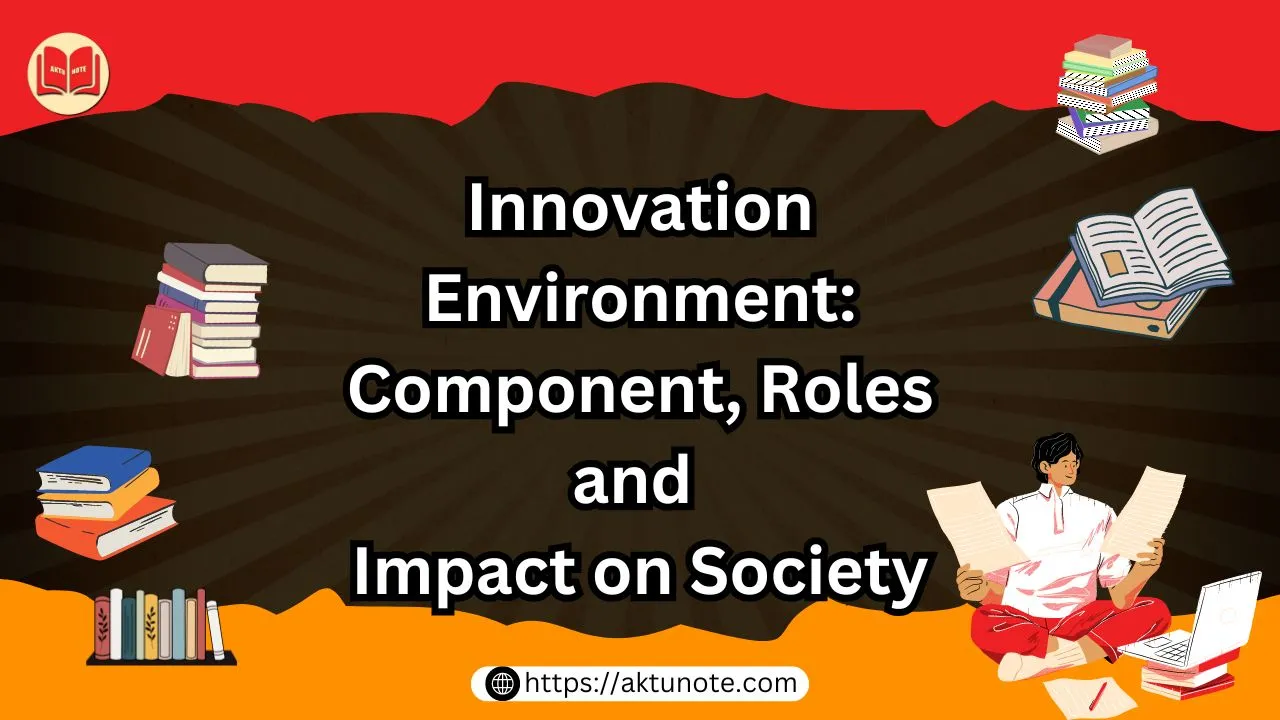Innovation has become a cornerstone of success in today’s fast-paced world, but innovation doesn’t happen in isolation. It thrives in an environment that fosters creativity, encourages collaboration, and provides the right resources. The innovation environment refers to the conditions, culture, and infrastructure that enable new ideas to flourish and transform into practical solutions.
In this article, we will explore what an innovation environment is, its key components, and how India, with its rich history of jugaad (frugal innovation), is shaping such environments to drive progress in various sectors.
What is an Innovation Environment?
An innovation environment encompasses the ecosystem where ideas are generated, tested, refined, and eventually turned into real-world applications. It includes the people, processes, technologies, and policies that encourage creative thinking and problem-solving. The environment could be within a company, a university, or even a broader societal framework, but its goal remains the same: to nurture innovation and take it from concept to reality.
In the Indian household, we can relate this to how families create a conducive environment for children to learn and explore. Whether it’s ensuring the right study space, access to resources like books or the internet, or encouraging discussions, the goal is to create a setting where young minds can flourish. Similarly, an innovation environment provides the infrastructure, resources, and culture needed for creativity and new ideas to thrive.
Key Components of an Innovation Environment
A thriving innovation environment depends on several key components, each of which plays a vital role in nurturing and supporting innovation.
Culture of Creativity and Experimentation
For innovation to flourish, there must be a culture that encourages risk-taking and experimentation. People should feel free to think outside the box without the fear of failure. In India, we’ve seen this through the rise of jugaad, where innovative solutions are developed using limited resources. Whether it’s a rural farmer using scrap materials to create a makeshift irrigation system or someone converting a bike into a water pump, the culture of jugaad reflects a spirit of creativity and experimentation.
Collaboration and Knowledge Sharing
Innovation thrives in an environment where collaboration is encouraged. This includes not just collaboration within teams but also across departments, industries, and even countries. Universities, research institutions, and industries working together can lead to breakthroughs. In India, institutions like IITs and IIMs have partnered with various industries to conduct research and develop products that are both cutting-edge and practical. An environment where knowledge is shared openly, like in hackathons or collaborative projects, fosters the cross-pollination of ideas.
Access to Resources and Infrastructure
Innovation requires access to proper resources—whether it’s technology, funding, or infrastructure. This is why innovation hubs, incubation centers, and technology parks play a crucial role in providing startups and innovators the tools they need. In India, places like Bengaluru, known as the Silicon Valley of India, offer such infrastructure where startups and tech companies can access talent, technology, and investment opportunities. The rise of Atal Innovation Mission has also provided innovators in rural and semi-urban areas with resources to create solutions for local problems.
Government Policies and Support
Government policies play a significant role in shaping the innovation environment. Policies that encourage research and development (R&D), provide tax incentives, or offer grants for startups can spur innovation. The Startup India initiative, launched by the Indian government, is a prime example of this. Through this initiative, entrepreneurs receive financial and operational support to innovate across various sectors. Additionally, initiatives like Digital India and Make in India have focused on fostering innovation in areas like technology, manufacturing, and services, driving the growth of new businesses.
Technology and Digital Infrastructure
In today’s world, technology is a key driver of innovation. An innovation environment must include access to advanced technologies like artificial intelligence, big data, and cloud computing. With India’s booming IT sector and digital infrastructure, companies have access to cutting-edge technologies that enable them to innovate faster and more effectively. The government’s push for digitization has ensured that even small businesses in rural areas can leverage digital platforms to grow and innovate.
Education and Skill Development
Innovation thrives where there is a strong foundation of education and skill development. Universities and educational institutions that emphasize critical thinking, problem-solving, and entrepreneurship are essential to an innovation environment. In India, institutions like IITs and NITs are nurturing the next generation of innovators by offering courses in technology, entrepreneurship, and design thinking. The focus on STEM (Science, Technology, Engineering, and Mathematics) education in Indian schools and colleges is also fostering a culture of innovation.
The Role of Innovation Hubs in India
In recent years, India has witnessed the rise of several innovation hubs that serve as focal points for fostering creativity and technological advancement. These hubs provide innovators and startups with the necessary infrastructure, mentoring, and resources to turn their ideas into reality. Let’s take a look at a few examples:
Bengaluru
India’s IT capital, Bengaluru, is home to numerous startups, tech companies, and R&D centers. The city’s innovation environment is driven by the presence of a highly skilled workforce, access to venture capital, and a strong entrepreneurial culture. Startups in Bengaluru are working on innovations across fields like fintech, healthcare, artificial intelligence, and more.
Hyderabad’s T-Hub
T-Hub in Hyderabad is one of India’s largest innovation ecosystems. It supports startups by providing them with access to mentorship, funding, and collaboration opportunities. The success of T-Hub has made Hyderabad a key player in India’s innovation landscape.
Kerala Startup Mission (KSUM)
Kerala Startup Mission has been instrumental in nurturing startups in the southern state. With a focus on technology and social innovation, KSUM offers incubation facilities, access to funding, and skill development programs to help innovators turn their ideas into market-ready products.
Atal Innovation Mission (AIM)
Launched by the Government of India, AIM aims to create a culture of innovation and entrepreneurship in schools and colleges across India. Through the establishment of Atal Tinkering Labs and Atal Incubation Centers, AIM provides students with hands-on experience in STEM fields, encouraging innovation at a young age.
The Impact of an Innovation Environment on Society
An innovation environment doesn’t just benefit businesses—it has a far-reaching impact on society as a whole. In India, innovations like the Aadhaar system, UPI (Unified Payments Interface), and telemedicine platforms have significantly improved the lives of people. By creating more efficient services, offering better healthcare, and providing financial inclusion, innovations have made life easier, especially for those in rural and underserved communities.
For instance, Aadhaar has transformed the way people access government services, ensuring that benefits reach the right individuals efficiently. Similarly, the rise of telemedicine platforms during the COVID-19 pandemic allowed patients in remote areas to consult doctors online, reducing the burden on healthcare facilities.
Moreover, innovations in agriculture—such as drone technology, precision farming, and mobile apps that provide weather and market updates—are helping Indian farmers increase productivity and manage resources better. These innovations have the potential to transform India’s agricultural landscape, ensuring food security and improving livelihoods.
For More Content Check Out :- KMBN 302
Conclusion
Creating a thriving innovation environment is essential for driving progress and solving real-world problems. In India, the combination of government support, collaborative culture, access to technology, and a growing startup ecosystem has laid the foundation for a vibrant innovation landscape. From urban tech hubs to rural communities practicing jugaad, India’s innovation environment is diverse, dynamic, and full of potential.
As we look to the future, nurturing this environment will be critical to ensuring sustainable development and economic growth. By fostering creativity, collaboration, and open knowledge sharing, India can continue to be a global leader in innovation, creating solutions that address not just local challenges but also global ones.

